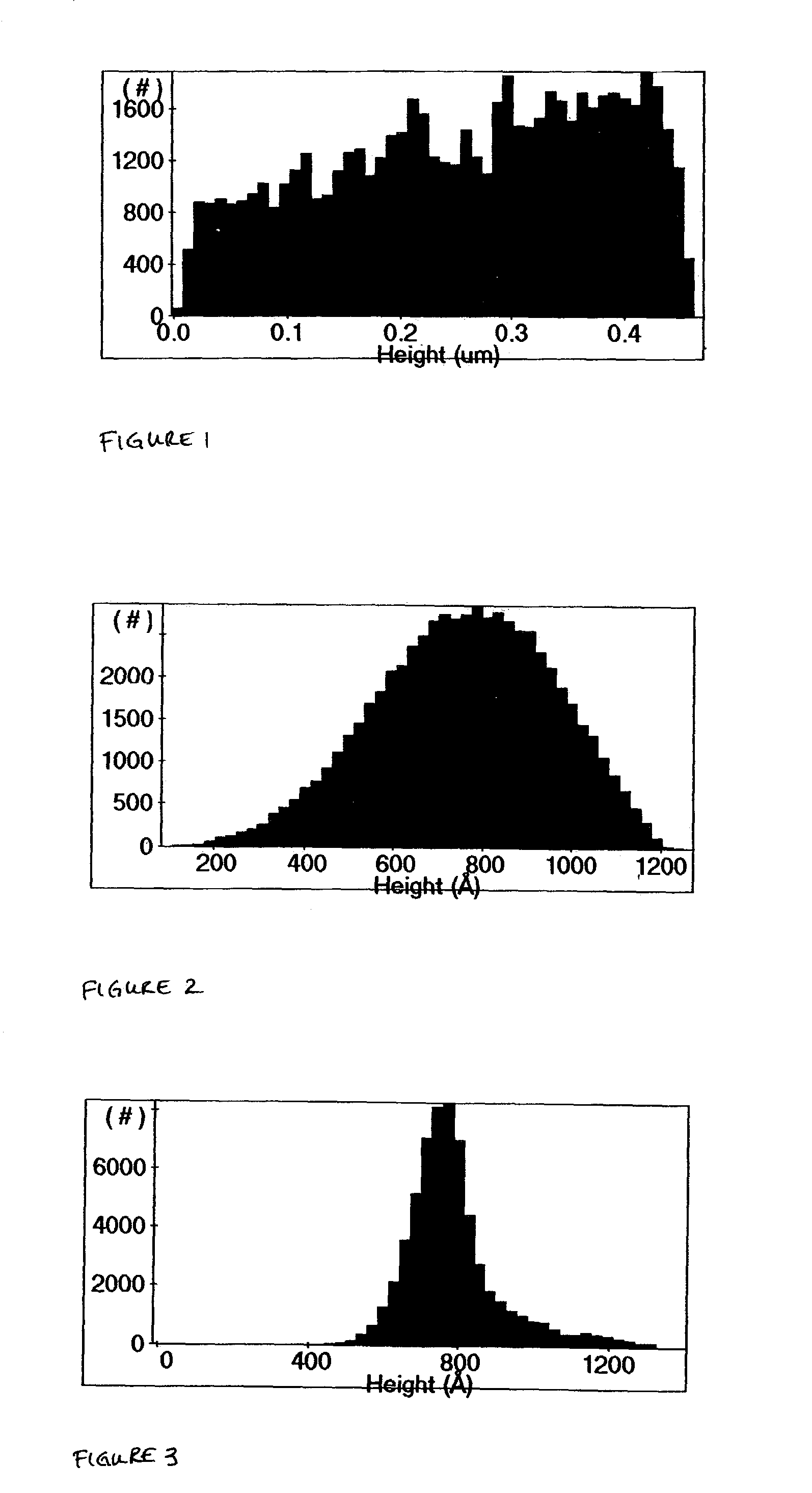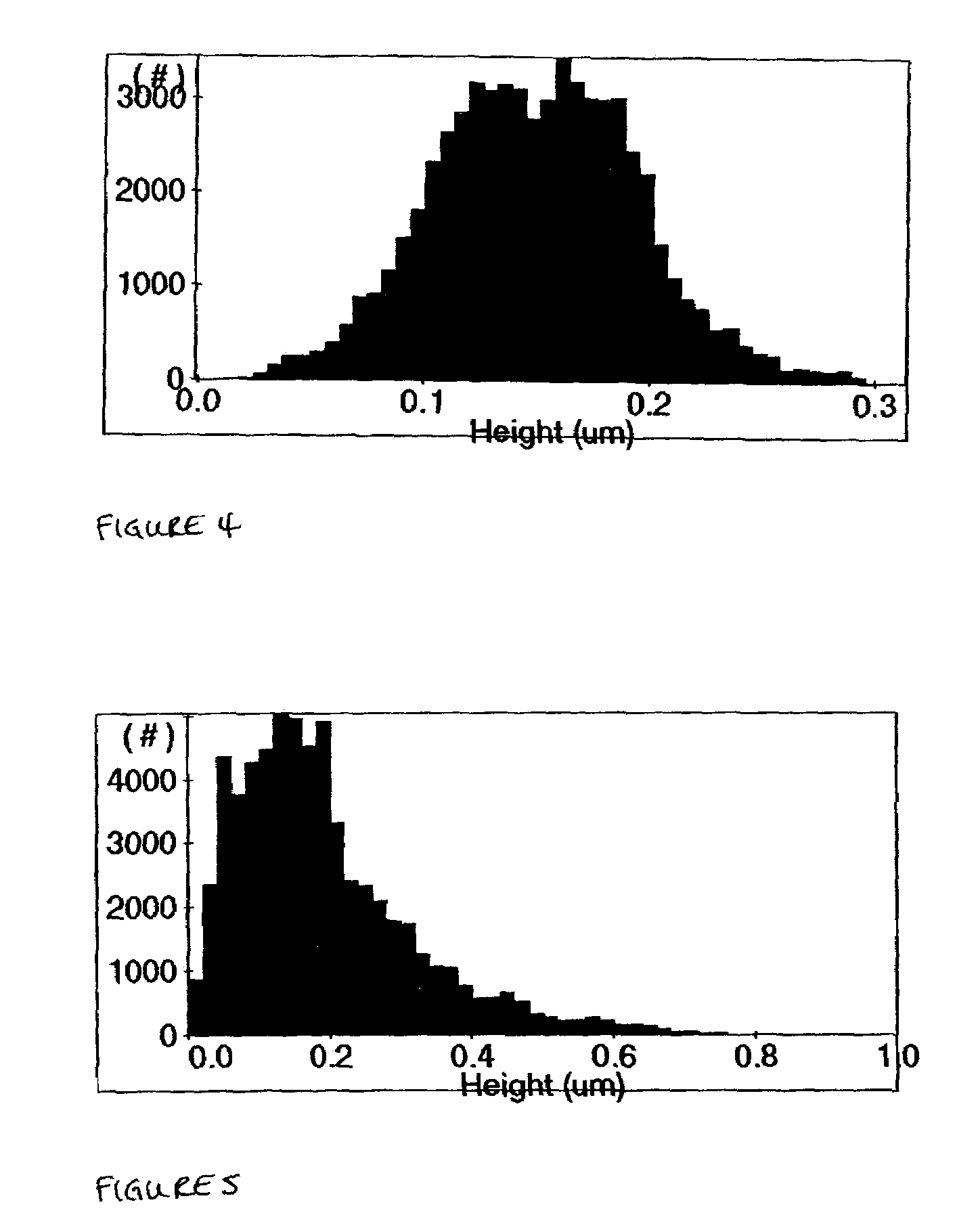Composition for chemical-mechanical polishing and method of using same
a technology of chemical mechanical polishing and composition, applied in the direction of polishing composition, other chemical processes, colloidal chemistry, etc., can solve the problems of affecting the yield and performance of the semiconductor device, the general disapproval of the approach, and the damage is particularly acute, so as to achieve a smooth surfa
- Summary
- Abstract
- Description
- Claims
- Application Information
AI Technical Summary
Benefits of technology
Problems solved by technology
Method used
Image
Examples
experimental examples
[0063]Experiments were carried out using various examples of a composition according to the present invention. The compositions employed were Compositions 1, 2 and 3, as previously described and shown in Table 2. Each of the compositions was titrated with ammonium hydroxide to arrive at a pH of about 6.5 prior to use in a CMP process, which is further described below.
[0064]Each of the compositions was used in a CMP process to polish copper wafers that were three inches in diameter and had about 1 μm of copper deposited on their surfaces via a plasma vapor deposition process. The process was carried out using a PM5 polisher (from LogiTech, Inc. of Westlake, Ohio) equipped with an IC 1000 polishing pad (from Rodel, Inc. of Pheonix, Ariz.). Process parameters included a downward or down-force pressure of 2 pounds per square inch (psi) via the carrier, a carrier speed of about 20 to about 25 revolutions per minute (rpm), a platen speed of 33 rpm, and a composition flow rate of 75 millil...
PUM
| Property | Measurement | Unit |
|---|---|---|
| average diameter | aaaaa | aaaaa |
| water content | aaaaa | aaaaa |
| pressure | aaaaa | aaaaa |
Abstract
Description
Claims
Application Information
 Login to View More
Login to View More - R&D
- Intellectual Property
- Life Sciences
- Materials
- Tech Scout
- Unparalleled Data Quality
- Higher Quality Content
- 60% Fewer Hallucinations
Browse by: Latest US Patents, China's latest patents, Technical Efficacy Thesaurus, Application Domain, Technology Topic, Popular Technical Reports.
© 2025 PatSnap. All rights reserved.Legal|Privacy policy|Modern Slavery Act Transparency Statement|Sitemap|About US| Contact US: help@patsnap.com


